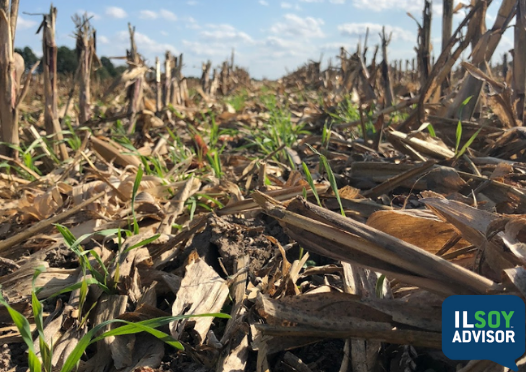I grew up on a small corn and soybean farm in Crawford County, IL. I enjoyed growing up on the farm and helping in the summers. I appreciated the lessons it taught me about making do with what you have and the valuable lessons you can only learn from manual labor. While I decided to leave the family farm for college, I was able to stay connected to agriculture through my education, majoring in Agricultural Engineering at the University of... Read More →
ILSOYADVISOR POST
WEBINAR: Cover Crops Role in Soil Health Webinar
April 26, 2018
Scott Wohltman from La Crosse Seeds explains the role that cover crops play in soil health. He will also discuss how growers can integrate cover crops into their operation.
- What does soil health mean?
- Continued capacity of soil as a vital living system whereby plant and animal growth, and environmental quality are sustained or regenerated; a holistic approach in which plant, animal and human health are promoted
- Soil health can be impacted
- Maximize biodiversity (enhance the rotation)
- Maximize soil cover with continuous living roots (versus 6-7-month alternative)
- Minimize disturbance (with less unnecessary tillage)
- Increased tillage = increase risk of erosion
- Tillage causes soil collapse
- Tillage destroys any advance in SOM—cutting water-infiltration rates by half and destroying microorganisms needed to maintain OM levels
- Winter cover crops catch potential losses between harvest and spring planting
- Continuous living roots
- Feedthe soil “food web”
- Without continuous living roots, soil organisms are short on food
- Growing plants slow wind & water erosion
- Erosion
- Our most productive soil rests near the surface
- Increased biological activity
- Greater nutrient availability and organic matter
- What if we had a cover crop?
- Biomass would intercept droplets
- Root channels and earthworm passages increase water-holding and infiltration
- Roots from covers keep soil in place
- Tolerable soil losses
- For most of Illinois, allowable soil losses (or the amount of topsoil that can be replaced) are set between 3 – 5 tons/acre/year
- Recent data from the Midwest shows we may only be replacing about .5 ton per year
- It would take a long time to build back an inch, or even half an inch of top soil
- Effect of Tillage
- Tillage ecosystems destroy earthwork activity
- Concepts of Soil Health Improvement
- Stabilizing, if not improving, soil OM
- Improving aggregate stability
- Improving nutrient cycling
- Increasing water infiltration
- Increasing water-holding capacity
- Plant Available Nitrogen (PAN)
- Legumes provide up to 100 lbs. PAN, but must be killed at bud stage to maximize benefit
- Cereals immobilize up to 50 lbs. PAN
- Total N as a % of Dry Matter is a good predictor of PAN
- PAN can be released as soon as 4 – 8 weeks after cover crop kill, depending on C:N ratio
- Increasing Water-holding & Infiltration
- Carbon
- Converting the sun’s energy into growing biomass helps our soils’ ability to turn excess carbon into organic matter
- Short term?
- Deep-rooting covers lead to deeper rooting cash crops
- Addition of residue helps lessen evaporation
- Mycorrhizae hyphae
- Integrating cover crops into the rotation
- What is my goal and or what am I trying to accomplish?
- Can I plant a cover crop to achieve my goal given my current cropping system (and when is my current planting window)?
- Am I willing to make the changes necessary (a real commitment) in order to succeed with this added cover crop?





Comments
Add new comment